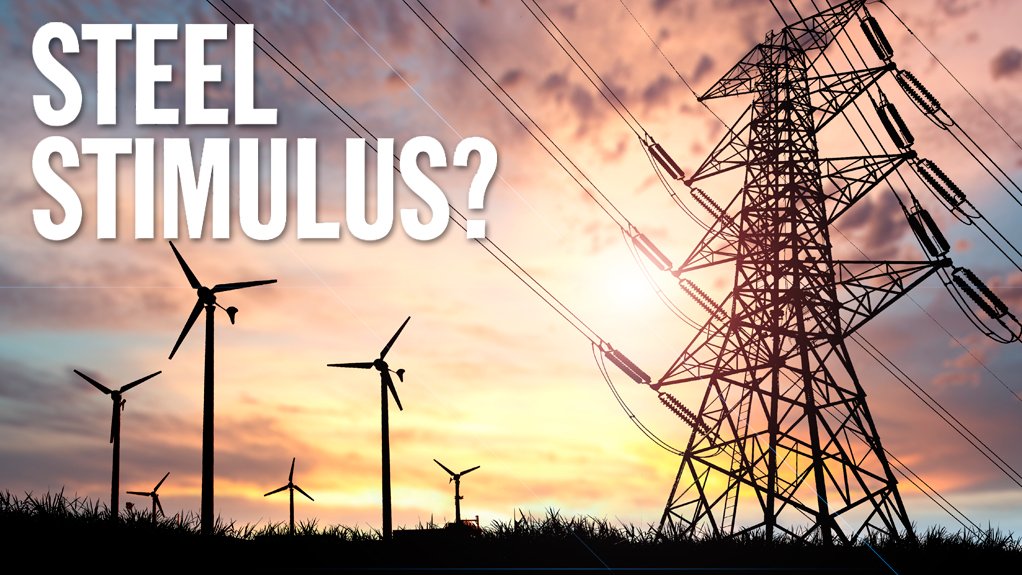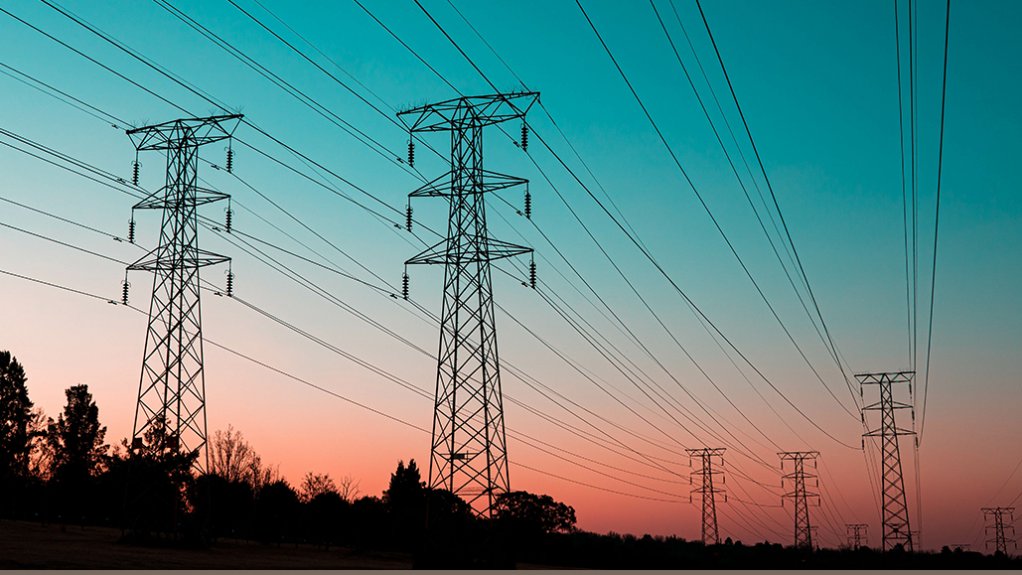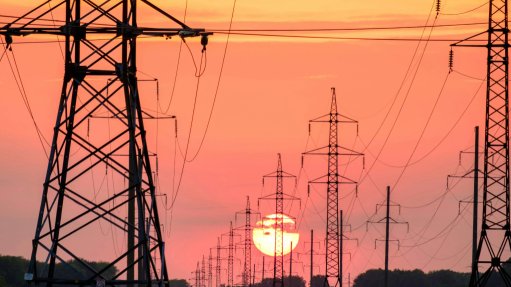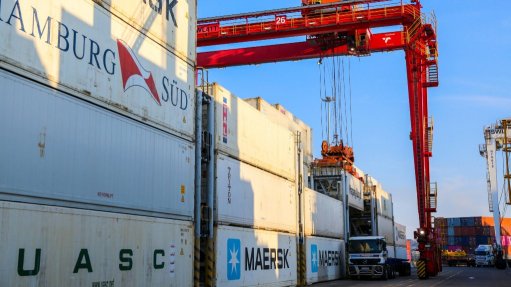Energy transition has potential to dramatically increase demand for steel





STEEL OPPORTUNITIES The development and construction of grid-grade renewable-energy projects presents the prospect of steel demand for steel frames used in solar installations, as well as steel used in wind turbines
TAFADZWA CHIBANGUZA To help the South African industry take advantage of various opportunities, Seifsa participated in numerous workstreams on the Steel Masterplan
GAYLOR MONTMASSON-CLAIR Transmission is expected to be a significant source of steel demand, especially considering that State-owned power utility Eskom is planning to roll out 14 000 km of new lines by 2032 to expand grid capacity
With local electricity grid constraints becoming more prevalent and given the global emphasis on decarbonisation, the ongoing energy transition, as well as loadshedding, is expected to present both opportunities and risks for the South African steel industry, which is in decline.
The South African Steel and Metal Fabrication Master Plan – released in 2021 – describes the local steel industry as being “largely in survival mode”, necessitating measures to increase demand for local steel and effective localisation.
To this end, the Steel and Engineering Industries Federation of Southern Africa (Seifsa) argues that government spending should prioritise local steel suppliers, with Seifsa COO Tafadzwa Chibanguza noting that the evolving energy transition and local energy constraints are creating a market for local steel supply for this transition.
“The global decarbonisation drive is well and truly under way, presenting both opportunities and risks for the South African sector,” he notes, explaining that renewable- energy implementation, which will also include strengthening the transmission grid, will require the establishment of more fabricators that produce steel towers for the transmission grid, for instance.
Construction and development of grid-grade renewable-energy projects presents the prospect of demand for steel frames used in solar installations, as well as steel used in wind turbines.
Coupled with investment to strengthen the transmission grid to handle renewable-energy capacity, the energy transition will also present demand for electric cables and transformers, which are downstream products.
Trade and Industrial Policy Strategies (TIPS) senior economist Gaylor Montmasson-Clair underlines this potential, confirming that the roll-out of renewable energy creates the potential for significant investment in transmission and distribution infrastructure made from steel.
The transmission sector is expected to be a significant source of steel demand, considering that State-owned power utility Eskom plans to roll out 14 000 km of new lines by 2032 to expand grid capacity.
The build programme aims to strengthen the transmission grid to cater for the injection of more distributed sources of generation, given that the power utility intends to retire 22 000 MW of coal-fired power capacity by 2035.
While the decommissioning may be somewhat delayed as the country seeks to navigate extreme loadshedding, South Africa will progressively have to replace its aged coal fleet largely with renewables, coupled with dispatchable technologies, probably including pumped hydro, batteries and some gas.
Montmasson-Clair highlights that the energy transition is expected to create market demand for about 450 000 t of steel, valued at about R27-billion, from Eskom over the next decade.
“In the South African context, tens of gigawatts of renewable energy will be rolled out to address our energy concerns and decarbonise our grid. As we start tapping into, for example, green hydrogen and new energy vehicles, some estimates expect the grid to increase up to four or five times by 2050.”
Amid the loadshedding crisis, Chibanguza contends that the deterioration of infrastructure presents another opportunity for local manufacturers to restore and strengthen infrastructure to fill an existing electricity supply gap of 4 000 MW to 6 000 MW.
Consistent Demand?
While there is an opportunity for the energy transition to create new markets for the local steel industry, Chibanguza and Montmasson-Clair agree that various factors need to be considered.
Firstly, industry players need to assess whether demand for local steel is sufficient to warrant investment; therefore, demand for local steel needs to be clear and consistent for a long period to attract investors.
“We need to be very sure of what is going to happen in terms of roll-out because demand informs what is possible for renewable energy, in turn underlining opportunities for the steel industry. We need that clarity of demand from the public and private sides,” says Montmasson-Clair.
Secondly, the local steel industry faces the challenge of competing with imports, with Montmasson-Clair contending that “we need to have tough discussions about localisation and how we can support our local manufacturers in supplying the local market”.
Meanwhile, with the energy transition quickly becoming a reality, Chibanguza warns that policy provisions need to be introduced early enough for local steel suppliers to take advantage of the opportunities that arise as a result of global decarbonisation efforts.
Without adequate incentives in place to encourage local procurement, private-sector players are likely to import the necessary steel, he adds.
“There is a real role for policy to step in and assist companies with their decision to procure locally. Incentives can assist in growing the local industrial base, but if we do not act quickly enough, we run the risk of missing what could be the legacy of this energy transition, the energy crisis and the market it is creating.”
While it may be possible to prescribe policy and local content provisions for public- sector renewable-energy projects, the same leverage may not be as readily applicable to private-sector projects.
Chibanguza thus cautions that adopting a “stick approach” for private-sector megawatts will likely face resistance from private-sector players aiming to bring renewable energy on board as quickly as possible.
“Not adopting an incentive-type approach to localisation is likely to create tension and, consequently, delay the process of implementing private renewable-energy capacity,” he says.
Montmasson-Clair argues that, while incentives should be applied to local procurement and imports to encourage decarbonisation, stackable incentives that provide more subsidies for supporting local steel suppliers should be introduced.
Chibanguza also views the Energy Regulation Amendment Bill currently being processed in Parliament as a “critical piece of legislation” for creating the framework to accelerate energy-transition-related demand.
The legislation will outline the role of the National Transmission Company of South Africa, which is being unbundled from Eskom – a development that will “level the playing field” for more renewable-energy projects to come on stream, consequently allowing for grid expansion and easier access to capital independently.
To mitigate the risk of not having policies in place quickly enough, Seifsa emphasises private- and public-sector collaboration.
“Collaboration is important and will help to mitigate the risks that could prevent the industry from taking advantage of this wave,” says Chibanguza.
Likewise, he sees regional integration as an opportunity for the steel sector, including those parts of the sector producing products for the energy transition.
South Africa, he argued, has an opportunity to take advantage of the African Continental Free Trade Area Agreement as Africa pursues its development agenda.
Chibanguza notes that South Africa can take advantage of its light and heavy engineering industrial capacity, coupled with its steel producing capacity.
“The opportunity for South Africa is that this productive capacity cannot be built in the short term, which opens a massive window of opportunity, as other countries are still trying to catch up.”
The National Infrastructure Plan 2050 estimates that the cost of delivering infrastructure to meet South Africa’s National Development Plan objectives will exceed R6-trillion from 2016 to 2040, with 72% of this spend – totalling R4.3-trillion – focusing on the energy and transport sectors.
“This infrastructure pipeline presents an opportunity for the domestic manufacturing sector. A progressive step by government is the realisation that it is unable to fund this infrastructure programme on its own, leading to its roping in the private sector to participate. This development is likely to bring the implementation of the programme closer to reality,” says Chibanguza.
Moving Forward
To help the South African industry take advantage of various opportunities, Seifsa participated in numerous workstreams on the Steel Masterplan.
The federation now aims to play a bigger role in advocating for a more conducive business environment for the local steel and engineering sector.
In this vein, Seifsa has submitted inputs to the South African Renewable Energy Masterplan (Sarem), highlighting how local conditions can support the development of a market based around the energy transition.
Sarem aims to ensure that South Africa has the correct ecosystem in place to support localisation through analysing trade and industrial policy packages that encourage and enable investment and incentive procedures.
It also aims to establish incentive programmes for renewable energy, and battery storage value chains with regard to manufacturing, to unlock as much demand as possible from the public and private sectors to encourage support for localisation.
“Our contribution, as Seifsa, in working with our counterparts in government to resolve sector issues, will dominate our short- to medium-term objectives. In the long term, our ultimate goal is to ensure that the local sector grows sustainably,” Chibanguza assures.
Article Enquiry
Email Article
Save Article
Feedback
To advertise email advertising@creamermedia.co.za or click here
Comments
Press Office
Announcements
What's On
Subscribe to improve your user experience...
Option 1 (equivalent of R125 a month):
Receive a weekly copy of Creamer Media's Engineering News & Mining Weekly magazine
(print copy for those in South Africa and e-magazine for those outside of South Africa)
Receive daily email newsletters
Access to full search results
Access archive of magazine back copies
Access to Projects in Progress
Access to ONE Research Report of your choice in PDF format
Option 2 (equivalent of R375 a month):
All benefits from Option 1
PLUS
Access to Creamer Media's Research Channel Africa for ALL Research Reports, in PDF format, on various industrial and mining sectors
including Electricity; Water; Energy Transition; Hydrogen; Roads, Rail and Ports; Coal; Gold; Platinum; Battery Metals; etc.
Already a subscriber?
Forgotten your password?
Receive weekly copy of Creamer Media's Engineering News & Mining Weekly magazine (print copy for those in South Africa and e-magazine for those outside of South Africa)
➕
Recieve daily email newsletters
➕
Access to full search results
➕
Access archive of magazine back copies
➕
Access to Projects in Progress
➕
Access to ONE Research Report of your choice in PDF format
RESEARCH CHANNEL AFRICA
R4500 (equivalent of R375 a month)
SUBSCRIBEAll benefits from Option 1
➕
Access to Creamer Media's Research Channel Africa for ALL Research Reports on various industrial and mining sectors, in PDF format, including on:
Electricity
➕
Water
➕
Energy Transition
➕
Hydrogen
➕
Roads, Rail and Ports
➕
Coal
➕
Gold
➕
Platinum
➕
Battery Metals
➕
etc.
Receive all benefits from Option 1 or Option 2 delivered to numerous people at your company
➕
Multiple User names and Passwords for simultaneous log-ins
➕
Intranet integration access to all in your organisation






















